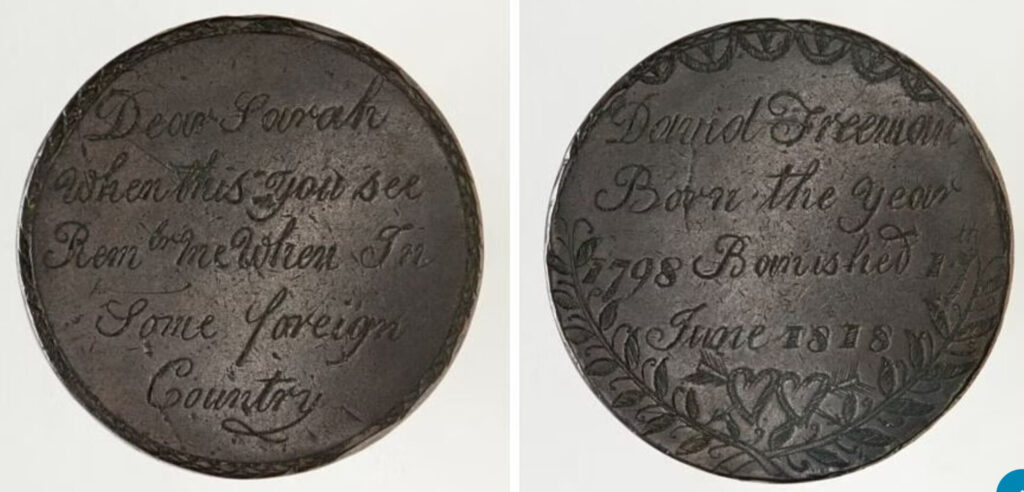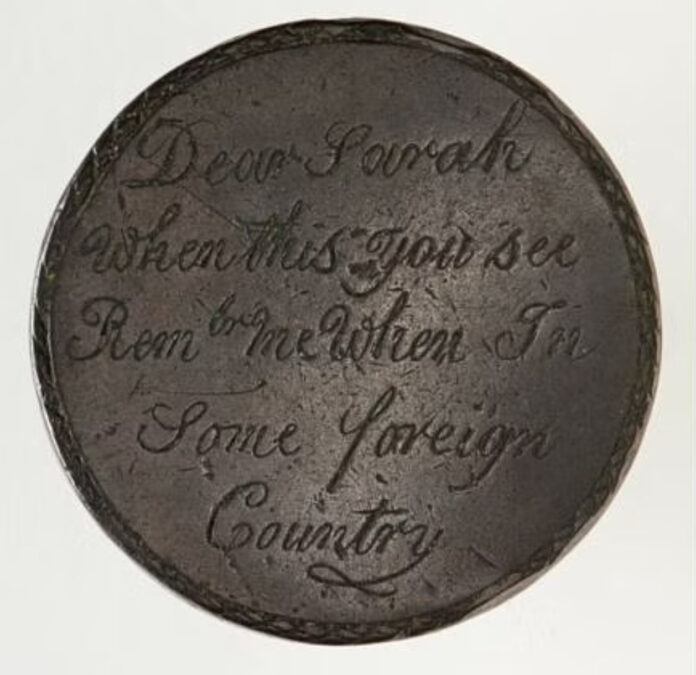NSW
Tura Marrang Library in the Bega Valley is hosting an emotive and poignant exhibition, ‘Convict Tokens’, which showcases 40 of the National Museum of Australia’s collection of 315 convict tokens – the world’s largest.
The exhibition explores the enduring connection between the convicts who made the tiny mementoes and those they left behind.
Engraved onto metal discs with illustrations and text, love tokens were made by convicts around the time of their sentencing and were given to friends and loved ones as farewell mementoes.
Although tiny, these tokens are rich in meaning and are a powerful link to Australia’s convict past.

Convicts’ lives are well documented by official government records, however, these tokens record personal and emotional responses to an uncertain future.
Bega Valley Council’s Acting Library Services Coordinator, Linda Albertson said Council was privileged to be chosen to host this remarkable exhibition.
“The convict tokens are truly extraordinary, each one carrying a unique story of an individual who was transported here,” Ms Albertson said.
“It’s a rare opportunity to witness the profound impact of these small coins, which were created by convicts as farewell mementos for loved ones.
“We are thrilled that our community can now have the privilege of viewing these tokens firsthand.”
Director of the National Museum of Australia, Dr Mathew Trinca, commended the showcase and praised its ability to take the Museum’s collection out to connect with new audiences around the country.
“These convict tokens are such an incredible part of the Museum’s collection, and we are delighted that, with the assistance of the Australian Government, this remarkable exhibition will reach new audiences around Australia,” Dr Trinca said.
“We are immensely proud to be sharing this fundamental part of Australian history with new audiences, who I know will be as captivated by this poignant exhibition as visitors to the National Museum in Canberra have been,” Dr Trinca said.
The tokens were engraved or stippled, which involved making marks with a series of small pinpricks. They might include the name of the convict and their loved one, the length of the convict’s sentence and popular phrases and rhymes of separation.
The tokens often contain clues that confirm their origin. They might feature figures in chains or birds soaring free. They often refer to slavery, liberty, being lag’d (imprisoned) or even ‘cast for death’.
Some tokens show signs of being made by the same hand, suggesting that more skilled convicts made and sold tokens to others.
Most of the tokens were acquired in 2008 from Timothy Millett, a British dealer and collector. Millett attempted to discover information about the people named on the tokens, but with many families keen to conceal evidence of a convict past, it was a difficult task. Today, Museum curators and family historians continue Millett’s research, aiming to identify the people and stories behind these precious mementoes.
The exhibition will be showcased at the Tura Marrang Library until 5 November.


